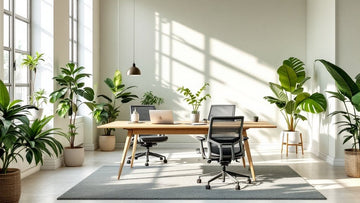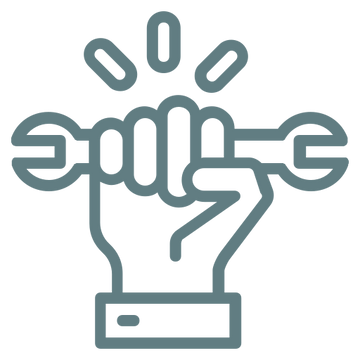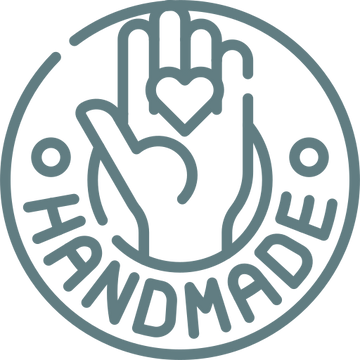A good workspace combines smart design with how people think and feel. Office layouts need both open spaces where people can work together and quiet areas for solo tasks. Colors matter too - bright, warm colors can make people feel more active, while softer, cool colors help them feel calm. Good lighting, especially from windows, helps workers feel better and get more done. Comfortable chairs and desks that can be moved around, plus areas made for team meetings, help workers feel good and work well together. When companies spend time and money on these design choices, workers not only do better work but also like their jobs more. Looking into more ways to improve office design can lead to even better results.
Key Takeaways
- An effective office layout combines open areas and designated work zones, enhancing collaboration and focus among employees.
- The use of appropriate colors in the workspace can influence emotions, encouraging energy or calmness based on design choices.
- Optimal lighting, especially natural sunlight, is essential for enhancing mood and maintaining employee health and productivity levels.
- Ergonomic and flexible furnishings improve comfort and adaptability, leading to increased productivity and employee satisfaction.
- Well-designed collaboration spaces that accommodate various group activities foster teamwork and enhance collective problem-solving abilities.
Understanding Office Layout
Office layout makes a big difference in how well employees work and how happy they are. A good office design mixes open areas with special work zones, helping people work together while still getting their own tasks done.
Open spaces help workers talk and share ideas naturally, which leads to better teamwork and new ways of thinking. Having different areas for different tasks - like quiet spots for focused work or meeting spaces for group thinking - helps people work in ways that suit them best.
Research shows that good office layouts help workers do better and feel better at work. That's why it's important to create office spaces that have both open areas and special work zones, making a workplace where people can do their best work and stay interested in what they do.
The Impact of Color
Color strongly affects how people feel and work in their office spaces. Understanding how colors influence emotions helps companies create better work environments. Warm colors can lift people's spirits, while cool colors help them concentrate better. The brightness of colors also matters - some shades can make workers more active, while others can help them feel relaxed. When colors match a company's brand, it helps build a unified workplace feeling. Here's how different colors affect people at work:
| Color | Emotional Response | Productivity Influence |
|---|---|---|
| Red | Increases energy | Encourages urgency |
| Blue | Promotes calmness | Enhances focus |
| Green | Encourages balance | Boosts creativity |
| Yellow | Evokes happiness | Stimulates innovation |
| Gray | Provides neutrality | Reduces anxiety |
Importance of Lighting
Good lighting plays a key role in creating a successful workplace, helping workers stay healthy and get more done. Sunlight helps people feel better and keeps their body clock in tune, making them more alert and sharp at work.
Personal lights like desk lamps help workers see their work clearly, which is easier on their eyes and helps them work better. Modern lighting systems let workers change how bright or warm the light is, making the space fit their needs.
Studies show that the right lighting makes workers more involved in their work and happier overall. Because of this, good lighting should be one of the main things to think about when setting up a workplace.
Choosing the Right Furnishings
The right office furniture makes a big difference in how well people work and feel. Good chairs and desks that fit the body properly help keep workers healthy and get more done. Using spaces that can serve different purposes gives workers choices about where and how to work.
Good storage helps keep the workplace tidy and makes it easier to focus, while letting workers add their own decorations makes them feel more at home and interested in their work. Adding special panels that reduce noise helps create a quieter place to work.
The table below shows what matters most when picking furniture:
| Category | Key Features |
|---|---|
| Ergonomic Furniture | Supports health and productivity |
| Multifunctional Spaces | Adaptable layouts for versatility |
| Personal Touches | Enhances motivation and comfort |
| Acoustic Solutions | Reduces noise distractions |
When selecting office furniture, it's important to consider ergonomic chair selection to ensure employee health and comfort. Additionally, having the right desk design for your work style can significantly impact productivity levels.
Enhancing Collaboration Spaces
Teamwork spaces play a key role in helping people work together and come up with new ideas at work. These areas help teams work better by giving them places that fit different work styles and make it easier to talk openly.
When spaces are easy to change around, teams can use them for many group activities, like sharing ideas, learning together, or having quick meetings. Research shows that well-designed group spaces help people work harder and feel more involved because they enjoy working near their coworkers.
Adding useful tools and comfy furniture makes it easier for people to work together, which leads to more creative thinking and better problem-solving as a group.
When companies spend time and money on creating good teamwork spaces, they help their workers do their best work together. Creating a client-friendly home office space principles can also be applied to collaborative work environments.
Frequently Asked Questions
How Can I Personalize My Workspace Without Disrupting Others?
To make your workspace feel like your own without bothering others, keep decorations simple and small. Try adding a few personal touches like family photos or desk plants. This helps make your space feel special while keeping things neat and work-friendly. Learn more about personalizing your workspace with custom details.
What Role Does Acoustic Design Play in Workplace Productivity?
The way a workplace handles sound can make a big difference in how well people work. When spaces are set up to control noise and make it easier to hear others clearly, workers can get more done. Using good sound control helps cut down on unwanted noise, which lets people focus better and work together more smoothly. This leads to happier workers who can do their jobs better.
How Often Should I Rearrange My Office Layout?
You should change your office setup about every six months. Moving things around keeps the space fresh and helps people think of new ideas. Regular changes make it easier for workers to adjust to new ways of working together, which helps them get more work done.
Can Outdoor Views Influence Employee Performance?
Yes, outdoor views can make a big difference in how well workers do their jobs. Being able to see nature helps people feel better, and looking at trees, sky, and other natural sights helps workers stay focused and come up with new ideas. This makes them work better and feel happier at their jobs.
How Should I Balance Aesthetics With Functionality in Design?
Good design mixes beauty with usefulness by using colors that make people feel better and work better, while making sure everything is comfortable to use. When these work together well, you get a space that helps people work better and feel happier about their work.
Conclusion
To summarize, the design of an office greatly influences employee productivity and well-being. By carefully planning layout, color, lighting, and partnering with quality furniture makers like Timbur, businesses can create spaces that spark creativity and teamwork. Studies show that smart improvements in these areas boost employee satisfaction and work performance. As more companies understand how office design affects their success, investing in well-crafted furniture and creating a zoom-worthy background with thoughtful furniture placement becomes essential for building a productive and positive work environment.









